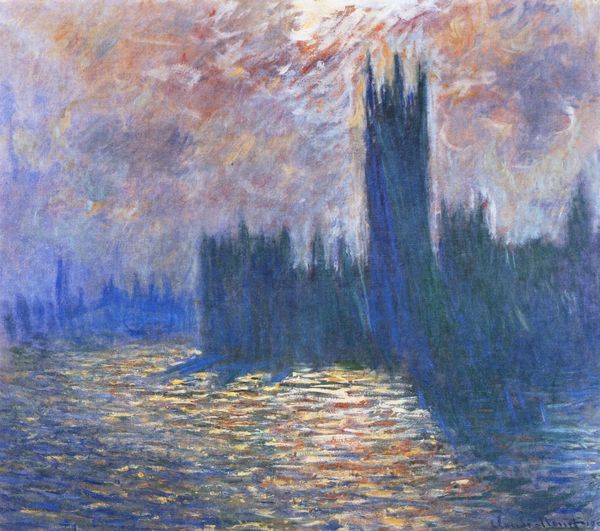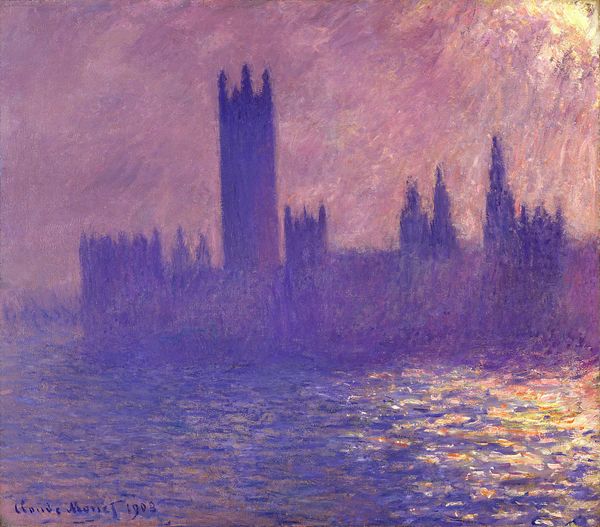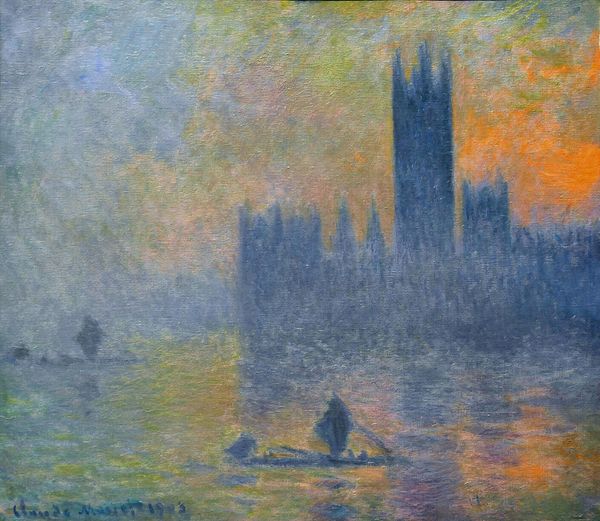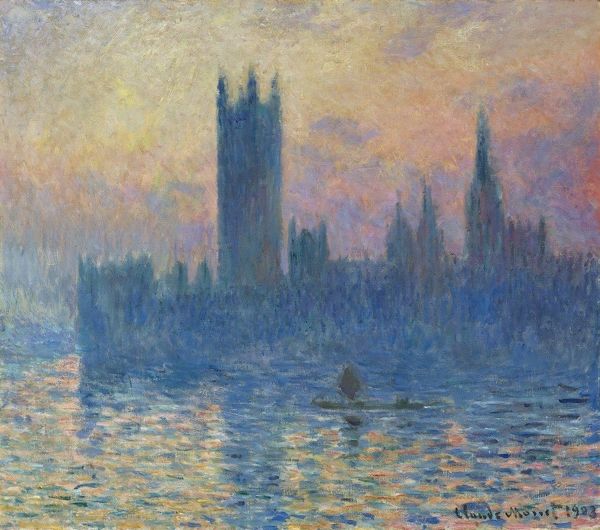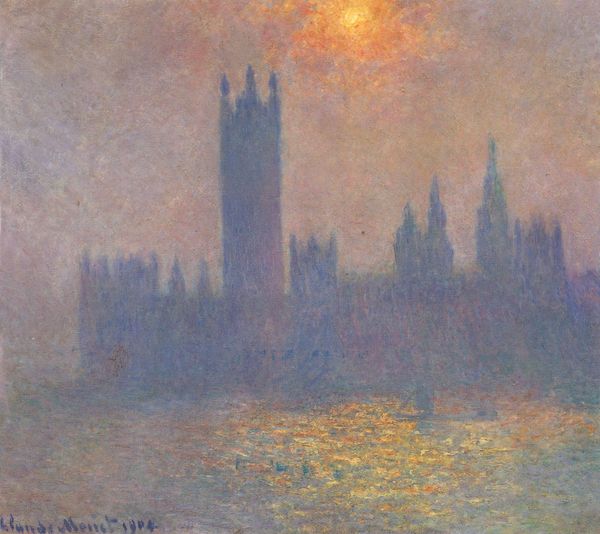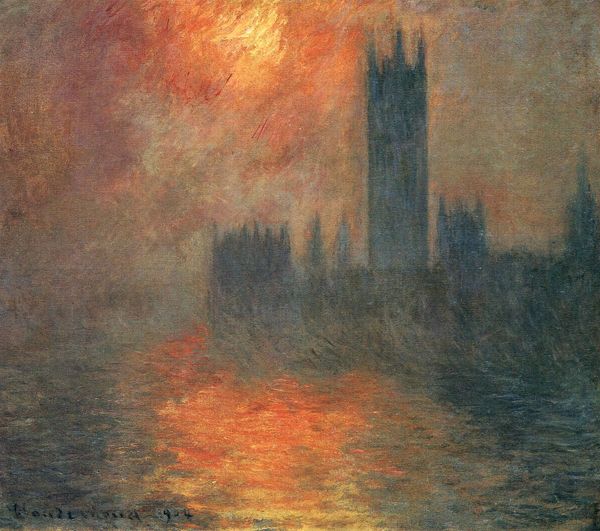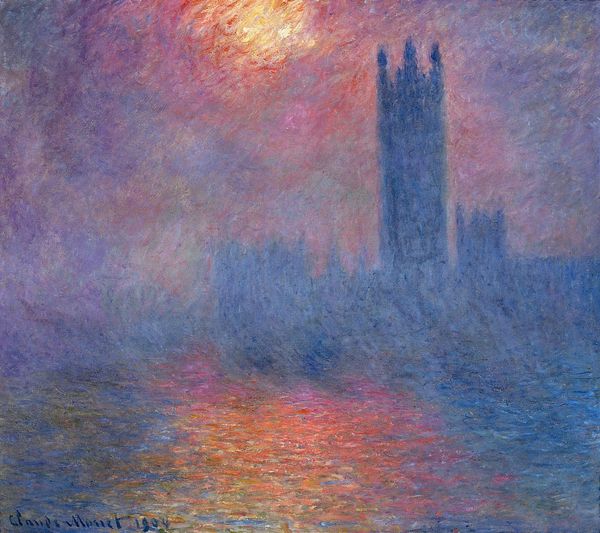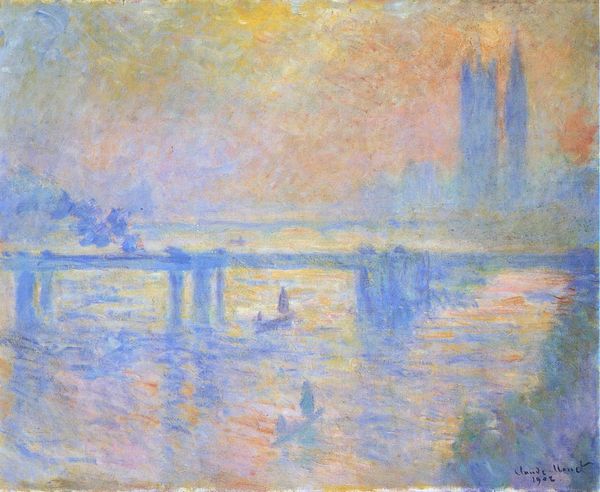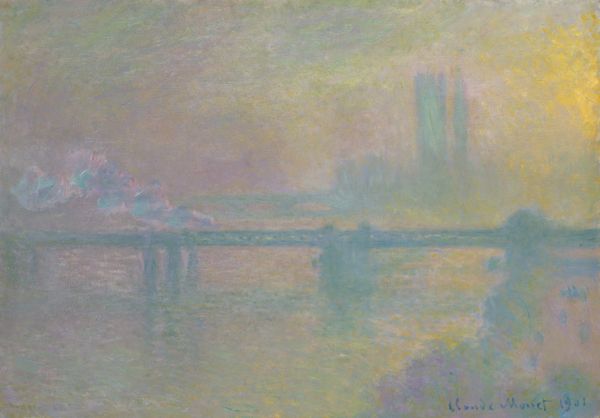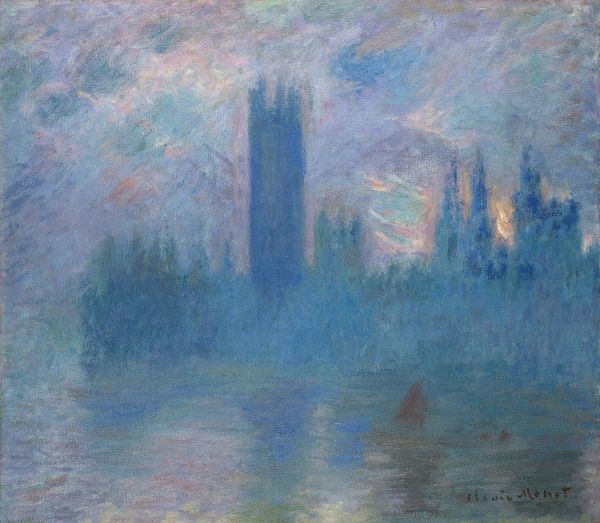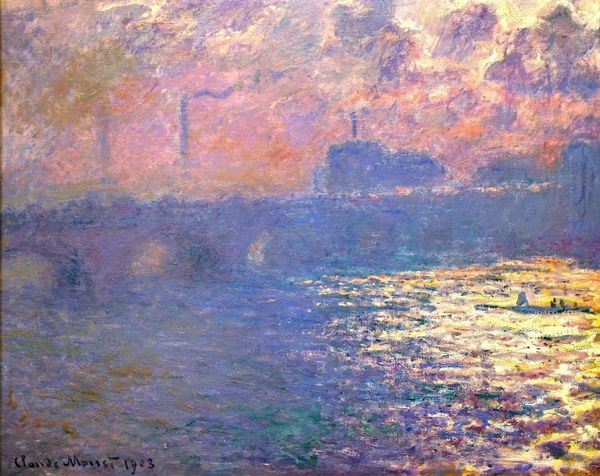
Copyright: Public domain
Editor: So, here we have Monet's "Houses of Parliament" from 1904, an oil painting that's dominated by hazy blues and yellows. I'm immediately struck by how the details are less about the architecture and more about capturing a specific atmosphere. What's your take? Curator: For me, it begins with Monet's process. Think about the materiality: oil paint, applied en plein air. He wasn’t just representing Parliament, but capturing a specific industrial atmosphere. The blurred lines are as much about the ephemeral nature of the light as they are a commentary on the rapidly changing urban landscape due to industrial manufacturing. The Thames itself became almost a conduit of waste, the river integral to London’s labour infrastructure. Can you see how the colours might echo that pollution? Editor: That's fascinating! So you're saying the haziness isn't just about Impressionistic style, but reflects a specific critique of industrial effects through his chosen medium? Curator: Precisely! He exploits the fluidity of oil paint to mirror the instability of London's environment, making a statement about the human cost of industrial progress. And, consider Monet as a businessman shipping these paintings. What commentary can we derive about his personal labor through commodity creation versus commentary through political paintings? Editor: That's really changed how I see the painting. It’s less a pretty picture, more a complex social statement embodied in the paint itself. Thanks! Curator: Indeed! Material analysis unlocks hidden dialogues, connecting art directly to labour, consumerism, and cultural critique. Food for thought.
Comments
No comments
Be the first to comment and join the conversation on the ultimate creative platform.
